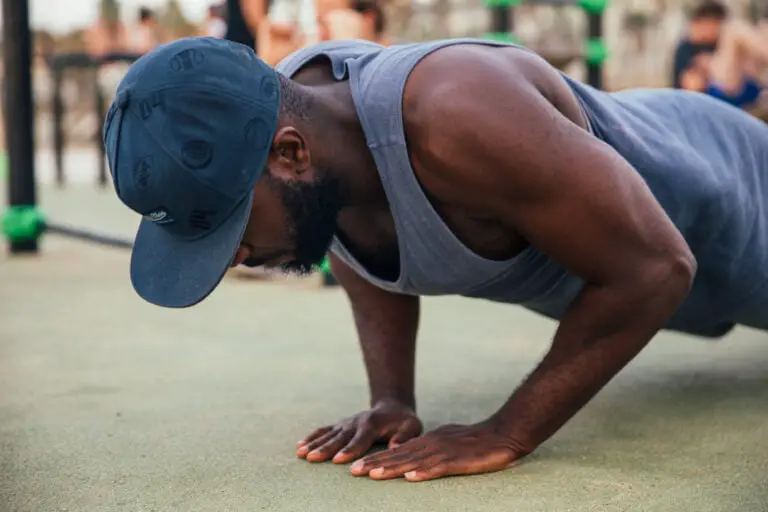6 Core Strengthen Exercises to Reduce Lower Back Pain

Lower back pain is a common and debilitating condition that affects millions of people worldwide. According to the World Health Organization, lower back pain is the leading cause of disability and one of the most frequent reasons for seeking health care. Lower back pain can have various causes, such as injury, inflammation, degeneration, or poor posture. It can also affect the quality of life, mood, and productivity of those who suffer from it.
One of the best ways to prevent and manage lower back pain is to strengthen the core muscles. The core muscles are a group of muscles that surround and support the spine, pelvis, and abdomen. They include the rectus abdominis, obliques, transverse abdominis, erector spinae, and multifidus. These muscles help to stabilize the spine, maintain proper alignment, and distribute the load evenly. By strengthening the core muscles, you can reduce the pressure on the lower back, improve your posture, and enhance your movement efficiency.
In this article, we will discuss some of the most effective core exercises for alleviating lower back pain. These exercises are designed to target the different core muscles and improve their endurance, strength, and coordination. They can be done at home, with minimal or no equipment, and with varying levels of difficulty. By incorporating these exercises into your routine, you can improve your core stability, reduce your lower back pain, and enjoy a healthier and happier life.
Understanding Lower Back Pain
Some of the common causes of lower back pain are bad posture, weak core muscles, a sedentary lifestyle, injury, inflammation, or degeneration of the spinal discs or joints. Lower back pain can interfere with daily activities such as sitting, standing, walking, lifting, or bending. It can also affect the quality of life, mood, and productivity of those who suffer from it.
Therefore, it is important to understand the role of the core muscles in spinal stabilization and pain management. The core muscles are a group of muscles that surround and support the spine, pelvis, and abdomen. They help to maintain proper alignment, balance, and movement of the spine. By strengthening the core muscles, you can reduce the stress on the lower back, improve your posture, and prevent or relieve lower back pain.
How Exercise Helps to Reduce Lower Back Pain
Exercise can be highly beneficial in reducing lower back pain. It helps by strengthening the muscles of the back, improving flexibility, and promoting overall spine health. Here are some ways in which exercise can help reduce lower back pain:
Strengthening your core muscles, which support and stabilize your spine and pelvis. Strong core muscles can reduce the pressure on your lower back and improve your posture and movement efficiency. You can start with beginner core exercises to strengthen the core muscles.
Stretching your tight muscles can cause or worsen lower back pain. Stretching can improve your flexibility and mobility, and prevent muscle spasms and stiffness.
Increasing your blood flow, can promote healing and reduce inflammation in your lower back. Exercise can also release endorphins, which are natural painkillers and mood boosters.
Prevention of Recurring Pain, research has found that regular exercise can reduce the frequency of recurring back pain attacks by almost half.
Core Exercises for Lower Back Pain
Here are some bodyweight core exercises that stretch and strengthen the back and the muscles that support it:
Bird Dog:
Description:
The bird dog exercise targets the muscles in your core, lower back, and glutes, promoting stability and balance which helps in back pain relief.
How to:
- Start on your hands and knees, with your wrists directly under your shoulders and your knees under your hips.
- Engage your core muscles to stabilize your spine.
- Extend your right arm forward and left leg back, keeping them parallel to the floor and straight.
- Hold for a few seconds, then return to the starting position.
- Repeat with the opposite arm and leg.
Prevention Tip:
Perform this exercise with slow, controlled movements to avoid straining your lower back.
Plank:
Description:
The plank is a classic core exercise that strengthens the muscles in your abdomen, back, and shoulders, promoting better posture and stability.
How to:
- Begin in a push-up position, with your hands directly under your shoulders and your body forming a straight line from head to heels.
- Engage your core muscles and hold this position for as long as you can, aiming for at least 30 seconds to start.
- Keep your breathing steady and avoid arching or rounding your back.
- Lower yourself down gently to rest between sets.
Prevention Tip:
Focus on maintaining proper form throughout the exercise to avoid excessive strain on your lower back.
Bridge:
Description:
The bridge exercise targets the muscles in your lower back, glutes, and hamstrings, helping to improve hip mobility and reduce lower back pain.
How to:
- Lie on your back with your knees bent and feet flat on the floor, hip-width apart.
- Engage your core muscles and lift your hips off the floor until your body forms a straight line from shoulders to knees.
- Squeeze your glutes at the top of the movement, then lower your hips back down to the starting position.
- Repeat for several repetitions, focusing on controlled movements.
Prevention Tip:
Avoid overarching your lower back by keeping your core muscles engaged throughout the exercise.
Dead Bug:
Description:
The dead bug exercise targets the muscles in your core while also improving coordination and stability.
How to:
- Lie on your back with your arms extended towards the ceiling and your knees bent at a 90-degree angle.
- Engage your core muscles to press your lower back into the floor.
- Slowly lower your right arm and left leg towards the floor, keeping them parallel to the ground.
- Return to the starting position and repeat with the opposite arm and leg.
Prevention Tip:
Focus on maintaining stability in your pelvis and lower back throughout the movement to avoid excessive arching.
Knee-to-chest:
Description:
Knee-to-chest exercises are gentle stretches that can help alleviate lower back tension and improve flexibility in the hips and lower back.
How to:
- Lie on your back, legs bent, feet flat on the floor.
- Pull up one leg with both hands and press it to your chest.
- Tighten your abdominal muscles and force your spine to the floor. Hold for 5 seconds. Return to the beginning position, then repeat with the opposite leg.
- Return to the starting position. Then repeat with both legs simultaneously.
- Repeat each stretch 2–3 times. Perform the exercise once in the morning and once in the evening, if possible.
Cat-Cow Stretch:
Description:
The cat-cow stretch helps to improve spinal flexibility and relieve tension in the lower back. Cat cow pose is the best yoga exercise that can help in your back pain relief.
How to:
- Start on your hands and knees, with your wrists directly under your shoulders and your knees under your hips.
- Inhale as you arch your back and lift your chest towards the ceiling (cow position).
- Exhale as you round your spine and tuck your chin towards your chest (cat position).
- Repeat this sequence for several repetitions, moving slowly and fluidly.
Prevention Tip:
Focus on syncing your breath with your movements to enhance relaxation and reduce stress on your lower back.
Common Mistakes to Avoid When Performing Core Exercises for Back Pain
When performing core exercises to alleviate or prevent back pain, it is essential to avoid certain mistakes that can exacerbate the issue or lead to injury. Some common mistakes include:
Overdoing crunches:
Crunches can tighten hip flexors, which can pull the lumbar spine forward and cause back pain.
Not stretching:
Tight muscles can trigger back pain, so it is important to stretch regularly, especially after workouts.
Lack of proper form:
Poor form, such as curving the back while lifting weights or performing planks, can lead to back pain and injury.
Lifting weights that are too heavy:
This can cause uncomfortable pain and increase the risk of injury.
Ignoring core exercises:
A strong core helps keep the spine stable and in its neutral position, reducing the risk of back pain.
Engaging the wrong core muscles:
Not engaging the abs and specifically pulling the navel in toward the spine during all workouts is a common mistake that can compromise form.
Arching the lower back:
This can lead to prolonged stress on the back and is a common mistake during leg lower exercises and other ab-focused moves.






